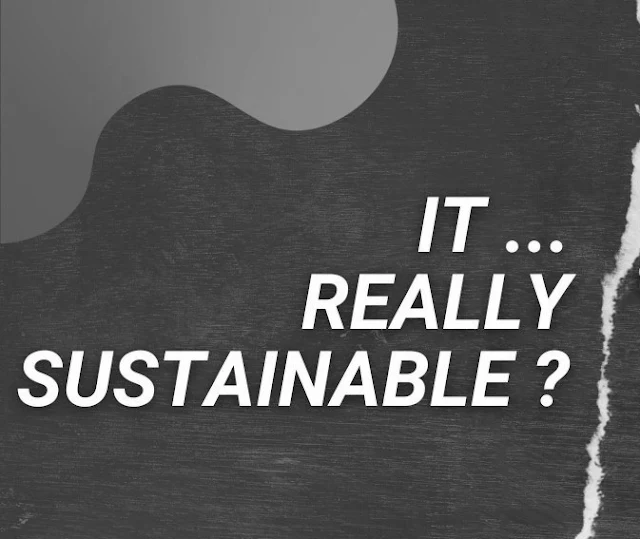The Promise of Sustainable Agriculture
The question of whether sustainable agriculture is
truly sustainable in India is complex, involving economic, environmental, and
social dimensions. While sustainable practices offer a promising alternative to
conventional, input-intensive agriculture, several challenges and nuances must
be considered.
Benefits of Sustainable Agriculture
Sustainable agriculture is seen as a vital
alternative to conventional farming, which has led to soil degradation,
declining groundwater levels, and reduced biodiversity. Sustainable
practices aim to meet current food needs without compromising the ability of
future generations to meet their own needs. These practices include
agroforestry, crop rotation, rainwater harvesting, organic farming, and natural
farming.
Sustainable
agriculture offers several potential benefits:
Environmental benefits: Sustainable
practices can reduce reliance on pesticides and excessive water use. They
can also enhance soil health, conserve water, and enhance biodiversity. Practices
like agroforestry, conservation agriculture, and System of Rice Intensification
(SRI) have shown promise in climate mitigation.
Economic benefits: Sustainable farming
can reduce input costs by eliminating the need for expensive synthetic
fertilizers and pesticides. It can also lead to yield improvements over
time. Farmers can command higher prices for their produce, increasing
their income levels, especially for smallholders.
Social benefits: Sustainable
agriculture can improve farmers’ food security by diversifying their food and
income sources. It can also enhance nutrition security for families
subsisting on agriculture.
Despite the potential benefits, several challenges hinder
the widespread adoption of sustainable agriculture in India:
Challenges to Sustainable Agriculture in India
To promote sustainable agriculture, the government
and other stakeholders need to take decisive action:
The Role of Government and Other Stakeholders
Lack of Awareness and
Knowledge: There
is a lack of awareness about sustainable farming techniques and their long-term
benefits among Indian farmers. Traditional knowledge often clashes with newer,
sustainable methods that require understanding soil health, biodiversity, and
climate resilience.
Fragmented Land Holdings: The average farm
size in India is only 1.08 hectares, making it challenging to implement
large-scale sustainable practices.
Overdependence on Chemical
Inputs: The
Green Revolution led to an overdependence on chemical fertilizers and
pesticides, leading to soil degradation, loss of biodiversity, and water
contamination.
Water Management Issues: Unsustainable
groundwater extraction and poor irrigation infrastructure cause water wastage
and waterlogging. Climate change exacerbates water scarcity.
Climate Change and Extreme
Weather: Erratic
weather patterns, increasing temperatures, and unpredictable monsoons disrupt
crop cycles and reduce yields.
Post-Harvest Losses and
Poor Infrastructure: Inadequate
storage facilities, poor transportation infrastructure, and inefficient supply
chains lead to significant post-harvest losses.
Policy and Market
Constraints: Inconsistent
implementation of government schemes and the lack of an organized market for
sustainably grown produce discourage farmers from adopting these practices.
Financial Constraints: The initial costs of
adopting new practices can be high for small farmers.
Current State of Sustainable Agriculture in India
Increased Funding: Allocate greater
resources to schemes like the Paramparagat Krishi Vikas Yojana (PKVY) and the Pradhan
Mantri Krishi Sinchai Yojana (PMKSY).
Strengthened Extension
Services: Invest
in training programs and leverage digital platforms to educate farmers about
sustainable methods.
Facilitating Access to Credit: Expand the Kisan Credit Card (KCC) scheme to include provisions for sustainable inputs.
Supporting Farmer Producer
Organizations (FPOs): Strengthen
FPOs to help small farmers access better markets and invest in collective
resources.
Multi-stakeholder
Collaboration: Strengthen
collaboration for financial inclusion and technological dissemination.
Educational Outreach: Expand educational
outreach and vocational training tailored to climate-resilient agriculture and
the needs of local communities.
Monitoring and Evaluation: Enhance the
monitoring and evaluation frameworks for policy implementation effectiveness.
Digital Tools: Increase the
integration of digital tools like websites/applications to improve access to
policy benefits and resources.
Sustainable agriculture is far from mainstream in
India. Crop
rotation is the most popular sustainable practice, covering around 30 million
hectares. Agroforestry and rainwater harvesting also have relatively high
coverage. Organic farming covers only 2% of India’s net sown area. Natural
farming is the fastest-growing sustainable practice.
Economic and Social Dimensions
A 2021 report by the Council on Energy,
Environment and Water (CEEW) indicates that the Indian government officially
identifies 16 sustainable agricultural practices, but sustainable agriculture
is far from being mainstream in India. The National Mission for
Sustainable Agriculture (NMSA) receives only 0.8% of the Ministry of
Agriculture and Farmers Welfare’s total budget.
The Need for a Holistic Approach
Income: The evidence around
the impact of sustainable agricultural practices on farmers’ incomes remains
insufficient, but the literature indicates the potential to enhance income
through reduced production costs, diversification of agricultural production,
and premium prices.
Yields: For organic farming,
yields are lower than conventional farming in the short term, but some studies
show equal and even higher yields for some crops after a few years.
Gender: Research studies
focusing on gender outcomes of sustainable agricultural practices are minimal.
A holistic approach is needed, integrating diverse
domains such as climate change, financial structures, educational efforts, and
production orientation. This includes technological adoptions,
infrastructure improvements, and capacity-building initiatives.
**Therefore, the answer is: ** While sustainable
agriculture holds significant promise for India, its sustainability is
contingent upon addressing the existing challenges, implementing supportive
policies, and fostering collaboration among various stakeholders. The
transition requires a comprehensive approach that considers economic viability,
environmental protection, and social equity to ensure long-term food security
and the well-being of farming communities.

